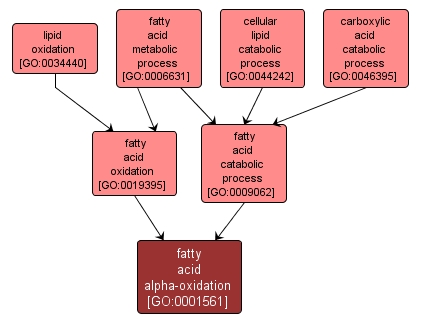| Desc: |
A metabolic pathway by which 3-methyl branched fatty acids are degraded. These compounds are not degraded by the normal peroxisomal beta-oxidation pathway, because the 3-methyl blocks the dehydrogenation of the hydroxyl group by hydroxyacyl-CoA dehydrogenase. The 3-methyl branched fatty acid is converted in several steps to pristenic acid, which can then feed into the beta-oxidative pathway. |














